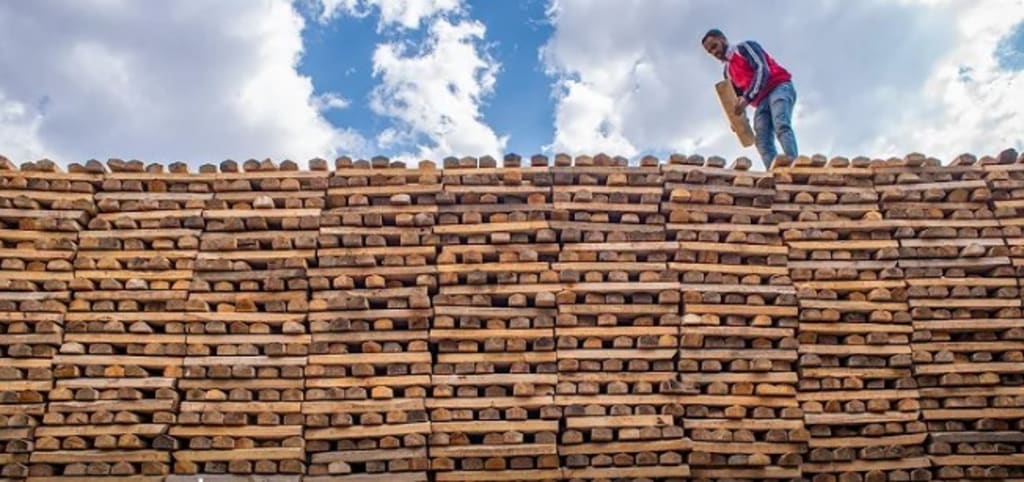Why India's $12 Million Cricket Bat Industry Is Fueled By UK Trees
Revealing the back story of Cricket Bat

According to plan, this wood will be cut, shaped, and scraped into one of the most expensive cricket bats. While making a high-end bat is labor-intensive, the real reason they cost so much is English Willow. English Willow bats are considered the cream of the crop, associated with star players like India's Surya Kumar Yadav and MS Dhoni. No professional player will use anything but English Willow. Nowadays, the highest-quality bats can go for up to $1,000. That's why police in India have cracked down on counterfeits trying to pass off bats made with less desirable wood.
So why are English Willow bats the top choice for pro cricketers, and why are they so expensive?
The bat he's holding is called the Gunther. It's English Willow and costs around $1,000. It is most expensive because of the quality of wood – the best quality selection of wood, the grains, and the Ping. But developing the best quality wood takes a long time, and a lot can go wrong.
The perfect tree for a cricket bat grows straight and slow, resulting in many grains close together in the wood. A tree that grows fast, on the other hand, will have fewer grains further apart. A bat made from wood that grows too fast will be lighter and softer, and it typically needs to be knocked in or played with a lot to harden it. The harder the bat, the further players can hit the ball. Most pro cricket players prefer tight-grained bats since more compact wood offers high performance from the start.
The process begins halfway around the world in a forest in England. Oliver Wright spends most of his time outside inspecting trees for JS Wright, the company that supplies the wood for about 75% of the world's English willow cricket bats. An English Willow Tree is ready to be cut down when it reaches 60 inches in diameter, which takes an average of 15 years.
It takes an average of 15 years for an English Willow Tree to be ready for cutting. Roughly, if you can just about touch your fingers around it, then it's near enough ready.
Side shoots need to be trimmed twice a year to prevent knots from appearing in the wood. There's also the risk of a tree rotting from within if it gets too much water, and pests and diseases can ruin the bark.
Once the trees reach the sawmill, the goal is to carve as many bats as possible from each one. This starts with cross-cutting the logs into 28-inch pieces with a chainsaw, then splitting these pieces into small slices called clefts. Each cleft will become a cricket bat.
It all depends on how it looks inside the tree. If it's rotten, we'll get slightly less; if it's nice and clean, we'll get slightly more. The average tree produces about 40 bats, but the record is about 700 bats from one huge tree.
At this stage, workers note any damage to the wood that might affect how it's graded later on. The most important step of the process is identifying the face of the cleft. This will be the part of the bat that strikes the ball and the part the buyer focuses on in the shop.
Once the face is decided and sown, you can't change your mind. Both ends are then covered in a special petroleum-based wax to reduce splitting.
The quality of a cricket bat isn't based solely on the type of wood but also its grade. At JS Wright, grades range from 1 to 20, with one being the best.
The sorted clefts are stacked and dried in both the open air and a kiln to remove any moisture. You can't rush this process. If you rush it, you get splits and heavy clefts.
JS Wright ships its processed and graded clefts all over the world. It's been supplying Serene Sports in India for about 50 years. Serene Sports makes 500 to 800 bats each day with the clefts it receives from JS Wright. One bat takes 24 to 36 hours from start to finish and will touch eight or nine different hands.
The process starts with smoothing out the clefts and cutting them down to size. A V-shape is also cut into one end with a bandsaw; this is where the handle will go. While the base of the bat is made from English Willow, the handle is made from cane imported from Singapore. Each piece of cane has layers of rubber inside for shock absorption. The cane is smoothed down and then inserted into the V. Each handle is glued in place, and it takes about 16 hours to dry.
Workers use tools like a planer and an ads to carve the bat's basic shape and make it more lightweight. A cricket bat is flat on the face and curved at the back. It's typically thicker toward the center or the sweet spot where it will make contact with the ball.
Finally, workers finish the handle by tightly winding a string around it and gluing a rubber grip on top. The bats are then sanded and polished. Serene Sports' English Willow bats can sell for over $1,000. But as with many other expensive products, fakes are a problem. Counterfeits often use cheaper wood like Indian Kashmir Willow and try to pass it off as English Willow.
The best way to make sure you're getting a legit bat is by buying from a certified dealer. Despite the risk of fakes, business is booming, and demand is increasing worldwide as cricket expands.
It is seen the cricket community grow in America. Now it's really starting to flourish.
In 2024, the T20 Cricket World Cup is being played in the USA for the first time ever, and a new professional league called Major League Cricket held its first season in 2023.
Shake, who has been playing cricket for 16 years, knows what the perfect bat looks and feels like. Right now, people buy a lot of bats online, which is like going on a blind date. You really don't know what you're going to get, even though the brands try to promise a certain type of quality.
There are two ways to judge a bat: pickup and ping. Pickup is the feel of it in your hands and getting a sense of the weight.
Then there's the ping test – the sound that most cricket pros know well. A good English Willow, when you hit it off the sweet spot, will make a beautiful sound. It's like that sound that you know you've hit the best part of the bat – that's the sweet spot.
But perhaps more than anything, cricket players look at aesthetics. What makes a good bat is the cleanliness of it. There are no stains; the lines are straight, especially in the sweet spot.
About the Creator
Virgo Kanya
I've just started my career as a content writer. Hope to the support of my audience and see my efforts. Thank you to all who are reading my content.
Enjoyed the story? Support the Creator.
Subscribe for free to receive all their stories in your feed. You could also pledge your support or give them a one-off tip, letting them know you appreciate their work.






Comments
There are no comments for this story
Be the first to respond and start the conversation.